Locals Call on Pol to Reduce Arrow Linen Rezoning, Back Fully Affordable Build
Neighborhood group Housing Not Highrises says it has found a developer who would build a 100 percent affordable development on the South Slope site.

Old renderings of the previously proposed 13-story towers on the Arrow Linen site in Park Slope. Rendering via Gerald J. Caliendo Architects
As the controversial rezoning proposal for Arrow Linen’s site in Park Slope moves through the city process, advocates for a shorter, more affordable housing development say they have found a developer willing to build one.
Their vision, they say, could yield more apartments than what is currently planned by Arrow Linen and at a lower price for renters. However, a rep for Arrow Linen says no “serious” buyer has contacted the company.
The laundry company’s rezoning application was certified by the City Planning Commission in June, kicking off the city’s formal land use review process. The plan, pitched by site owner Arrow Linen, is to build two 13-story residential buildings with 244 to 352 apartments, most of which would be market rate. If the mayor’s City of Yes passes, the development at 441 and 467 Prospect Avenue in Park Slope could be taller and contain more units, according to an updated Environmental Assessment Statement Arrow Linen filed in June.
In late July, Housing Not Highrises, which was formed in response to the rezoning plan and says it now has around 2,000 members, announced on its website it has found an unnamed nonprofit affordable housing developer who is willing to purchase the site at market value and build a 100 percent affordable development with 268 units affordable to those earning 60 percent of Area Median Income. That developer has since met with the council member and a lobbyist for Arrow Linen, Housing Not Highrises and a rep for the city council member told Brownstoner.
The rezoning, which would change the existing R5B zoning to R7-1 for the u-shaped site – and the privately owned townhouses it surrounds – is now going to the community board for a vote. The board plans to hold a public hearing on the rezoning on Monday, September 9. The venue has been moved from the regular location to accommodate a larger crowd.
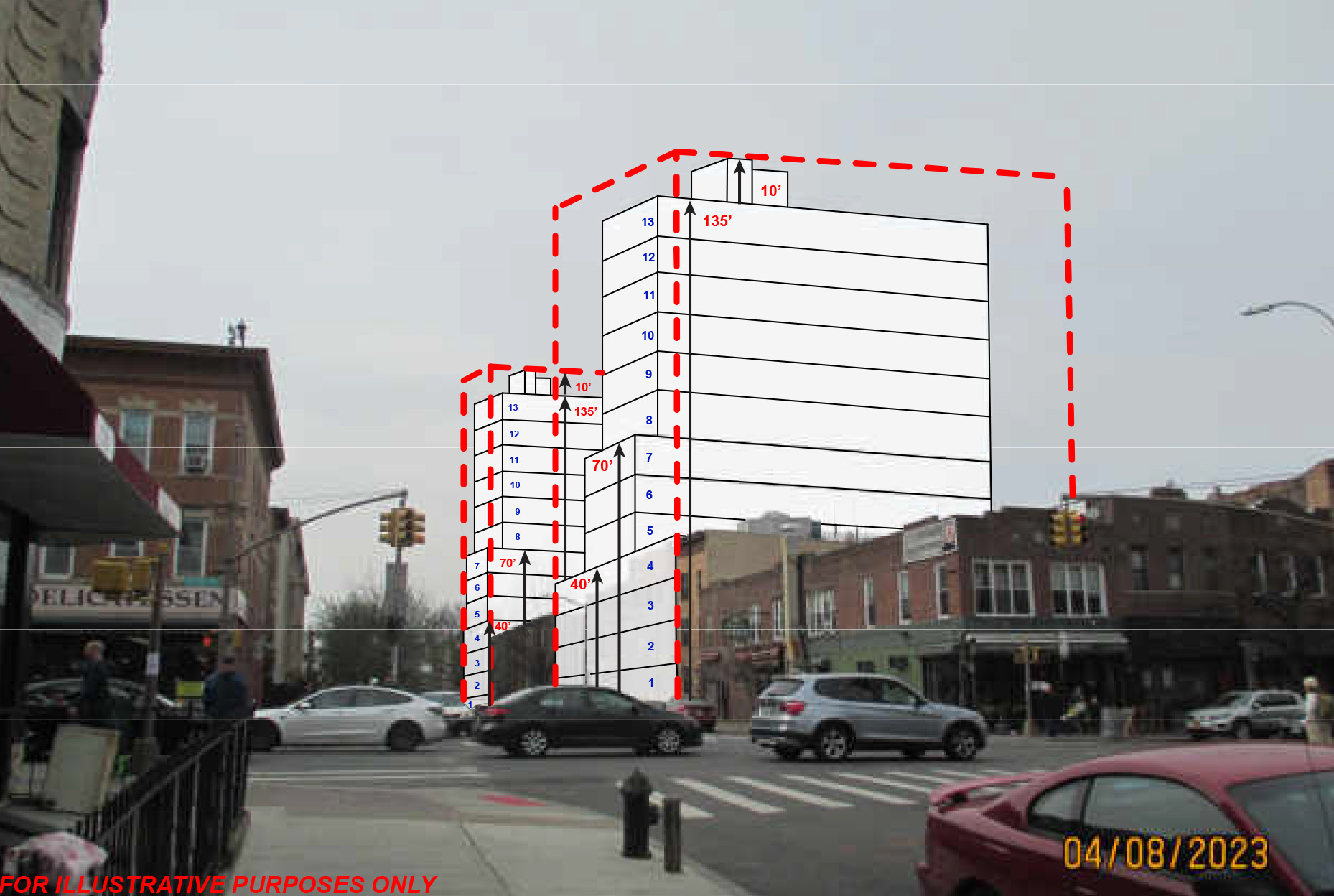
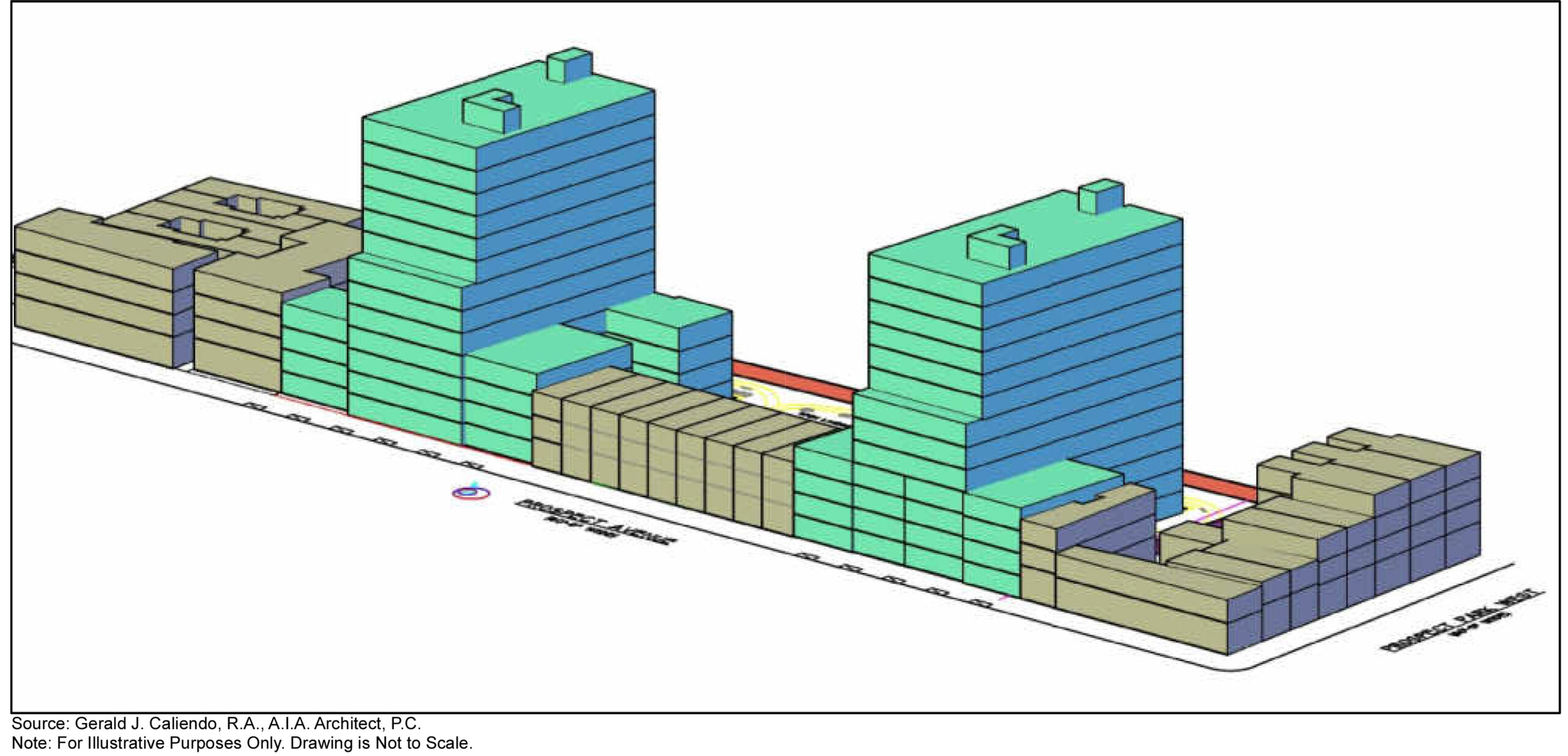
Rezoning application moves forward
Arrow Linen, a longtime Park Slope firm specializing in laundry services for hospitality businesses, has operated at 467 Prospect Avenue since 1978. The site is in South Slope on the border of Windsor Terrace, which is across the street. The company, started by the Magliocco family in 1947 and still family owned, has a second facility in Garden City, N.Y., on Long Island.
Proposed in the company’s spot rezoning application are two 13-story mixed-use towers with 244 to 352 apartments, depending on unit size. Thanks to the Mandatory Inclusionary Housing program required of any development that benefits from a rezoning, 20 to 30 percent of the units would be affordable, meaning income restricted and rent stabilized. The program allows income targets ranging from 40 percent to 120 percent of Area Median Income.
Arrow Linen has opted to make 61 to 87 of the units affordable and aimed at families earning 60 to 80 percent of Area Median Income, according to the rezoning application. Currently 60 percent AMI is $83,880 for a family of three and rent for a two-bedroom apartment targeted at that income would be around $2,097 a month. A family of three at 80 percent AMI would be earning $111,840 and a two-bedroom apartment intended for them would rent for about $2,796 a month.
The remaining 183 to 265 units in the development would be market rate. The current median rent for a two-bedroom in Park Slope is $4,495, according to Streeteasy data. The July market report from Douglas Elliman by appraisal firm Miller Samuel showed an average rental price of $4,200 for a two-bedroom for all of Brooklyn. A household would have to be making $179,800 a year to qualify to rent a $4,495 a month apartment (going by the landlord yardstick of earning 40 times rent).
Arrow Linen is working with developer Apex Development on the project, according to Apex’s website, and Gerald J. Caliendo Architects is behind the design of the renderings posted on its own website as well as Apex’s.
The renderings show the two 13-story structures have a red brick facade from the ground to fourth floor, a mix of panels and glass on the middle three floors, and then are all glass through the 13th floor. The buildings include balconies on the corner units and a terrace on the seventh floor with plantings, as well as greenery on the roof. The renderings and rezoning application both indicate a residents-only landscaped outdoor courtyard at the rear of the development will link the two buildings.
While the renderings and plans for the development show the two buildings at 13 stories and 140 feet tall (including 10-foot bulkheads), City of Yes zoning changes, if enacted, would allow for an additional 59 feet of height that could take the building to 19 stories and 194 feet, according to a June Environmental Assessment Statement filed in the rezoning application. According to the document, that would allow for an additional eight or nine affordable units, and up to 31 additional apartments overall.
The Environmental Assessment Statement doesn’t include any updated renderings or massing that show how the taller buildings would compare to the existing streetscape, which is composed of mostly three- and four-story townhouses. The tallest building in the area is the Bishop Boardman Apartments at seven stories.
According to The Real Deal, an in the works charter school is Apex’s first ground-up development. Earlier this month, the six-year-old Great Neck, New York-based developer applied to rezone an industrial area in Queens to allow for 500 apartments.
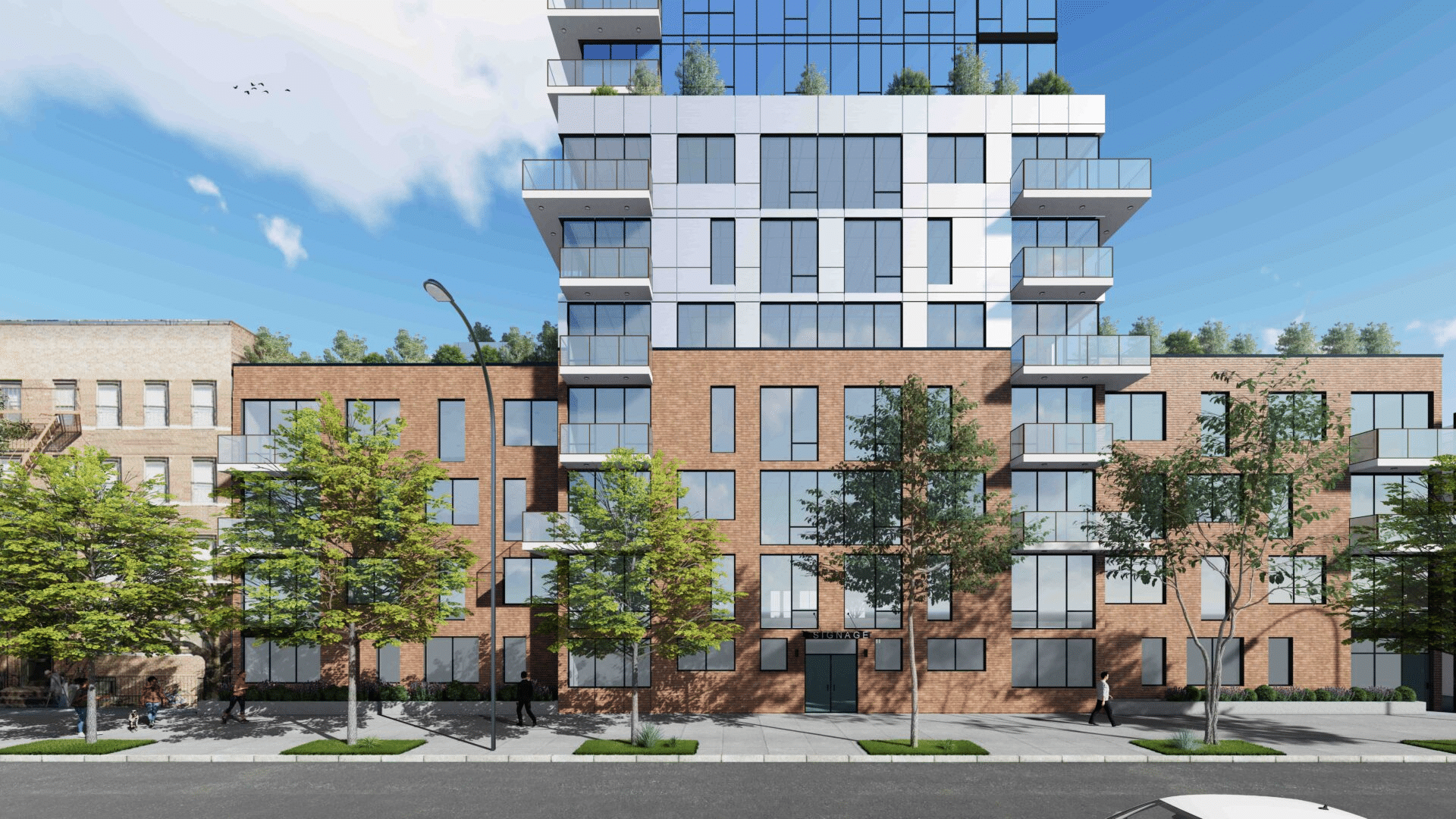
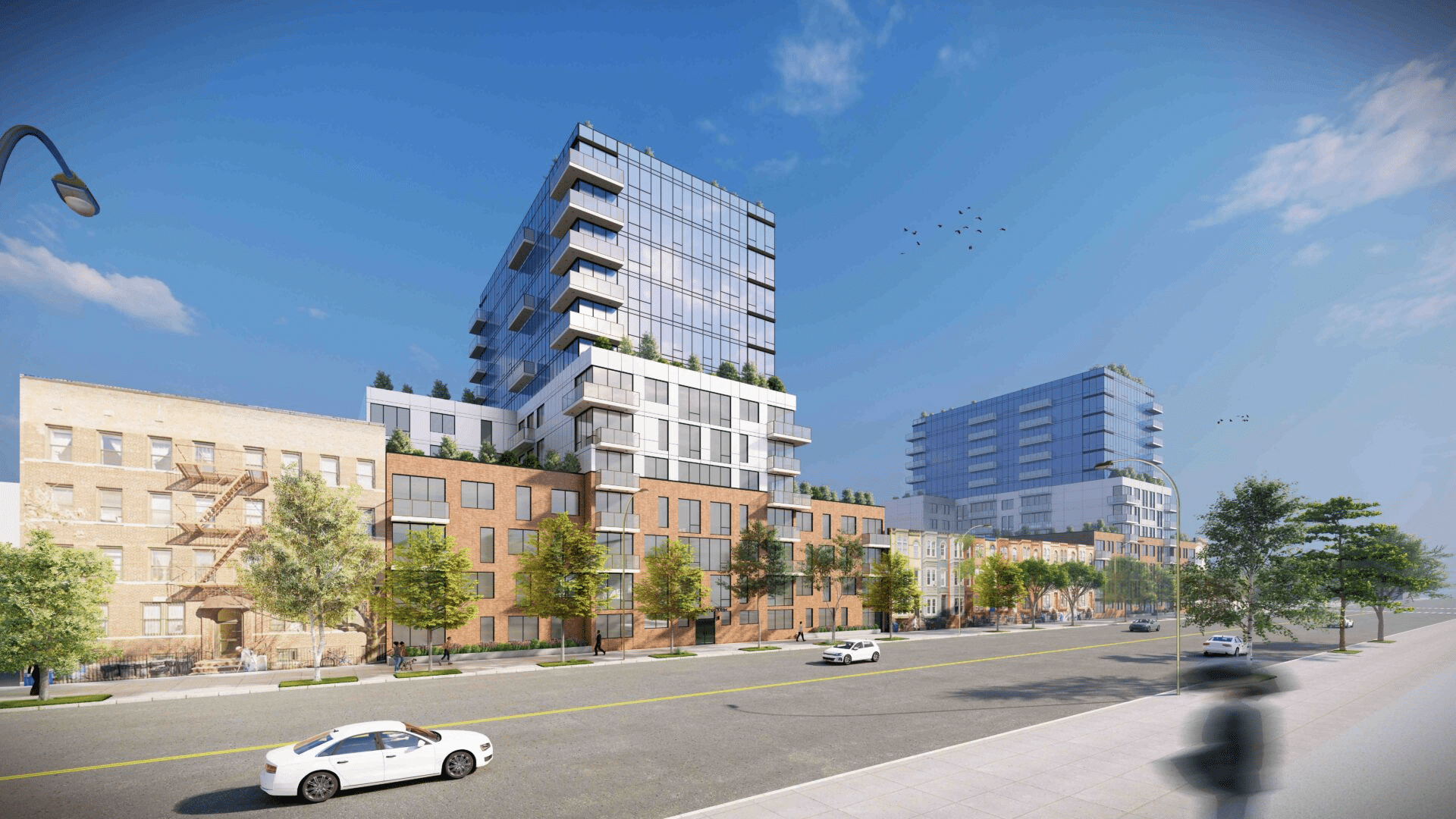
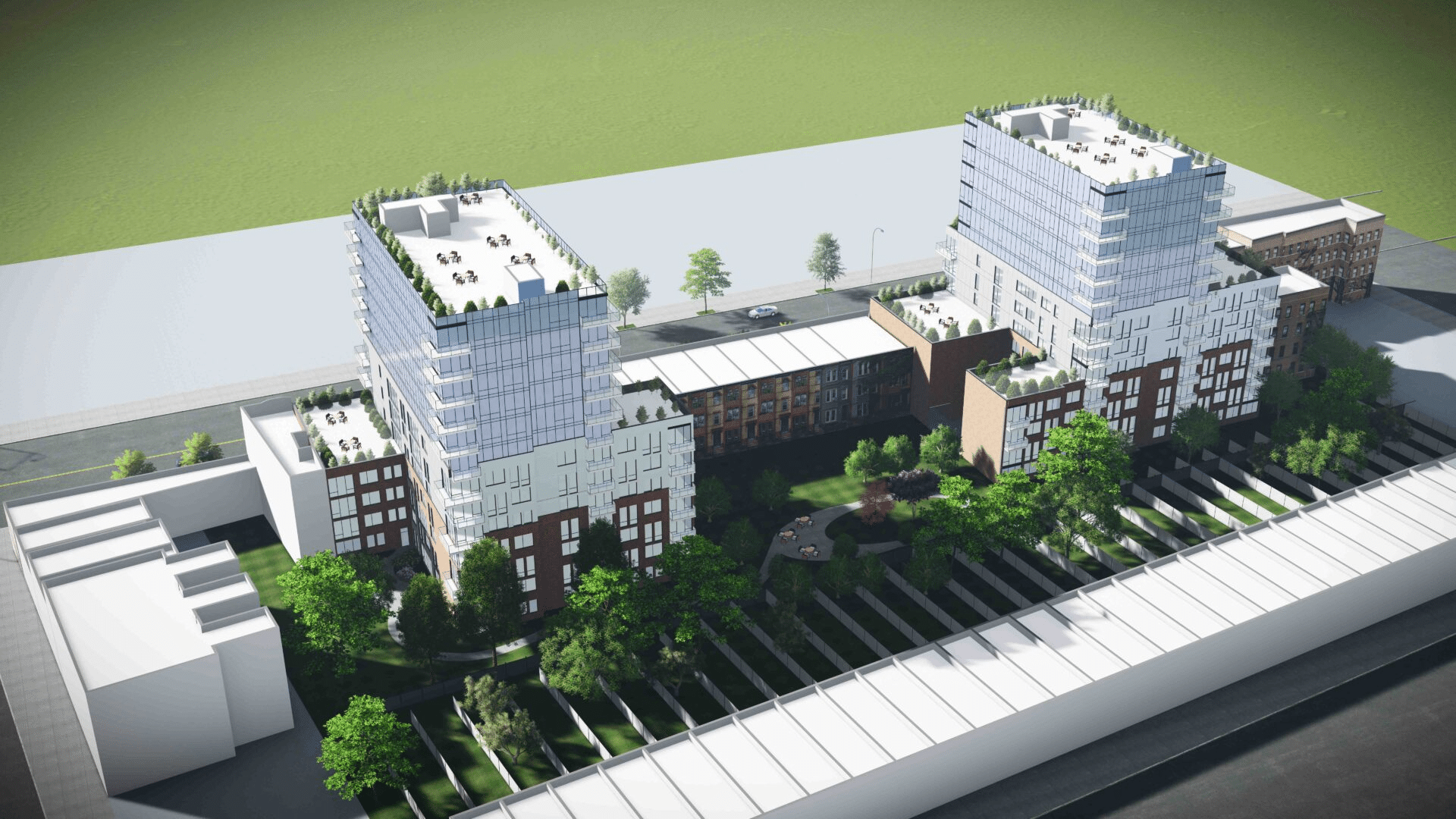
Affordable housing plan floated
Housing Not Highrises, which has advocated for what it says would be a more contextual and affordable solution to the development of the site, announced on its website in July it has found an unnamed nonprofit affordable housing developer “ready, willing, and able” to “make a competitive market-rate offer” on the site and build a seven-story, 268-unit, 100-percent affordable housing development. The apartments would be affordable to families earning an average of 60 percent of Area Median Income, or $83,880 for a family of three.
Currently, a two-bedroom for families earning 60 percent AMI would be around $2,097 a month, according to city data.
The affordable housing development envisioned would still require a zoning change from R5B to R6A to be built at seven stories, which could go up to nine stories with City of Yes, according to Housing Not Highrises. Potentially, that extra two stories would allow an additional 77 or 78 affordable apartments.
Housing Not Highrises member Jay Goldberg told Brownstoner that as of yet no formal offer has been made by the nonprofit affordable housing developer. Goldberg described the firm as already a major player in affordable housing development in the city and familiar with city and state funding programs. With the funding programs the developer would use, the development would also set aside 15 percent of its units as supportive housing for formerly homeless people, Goldberg added.
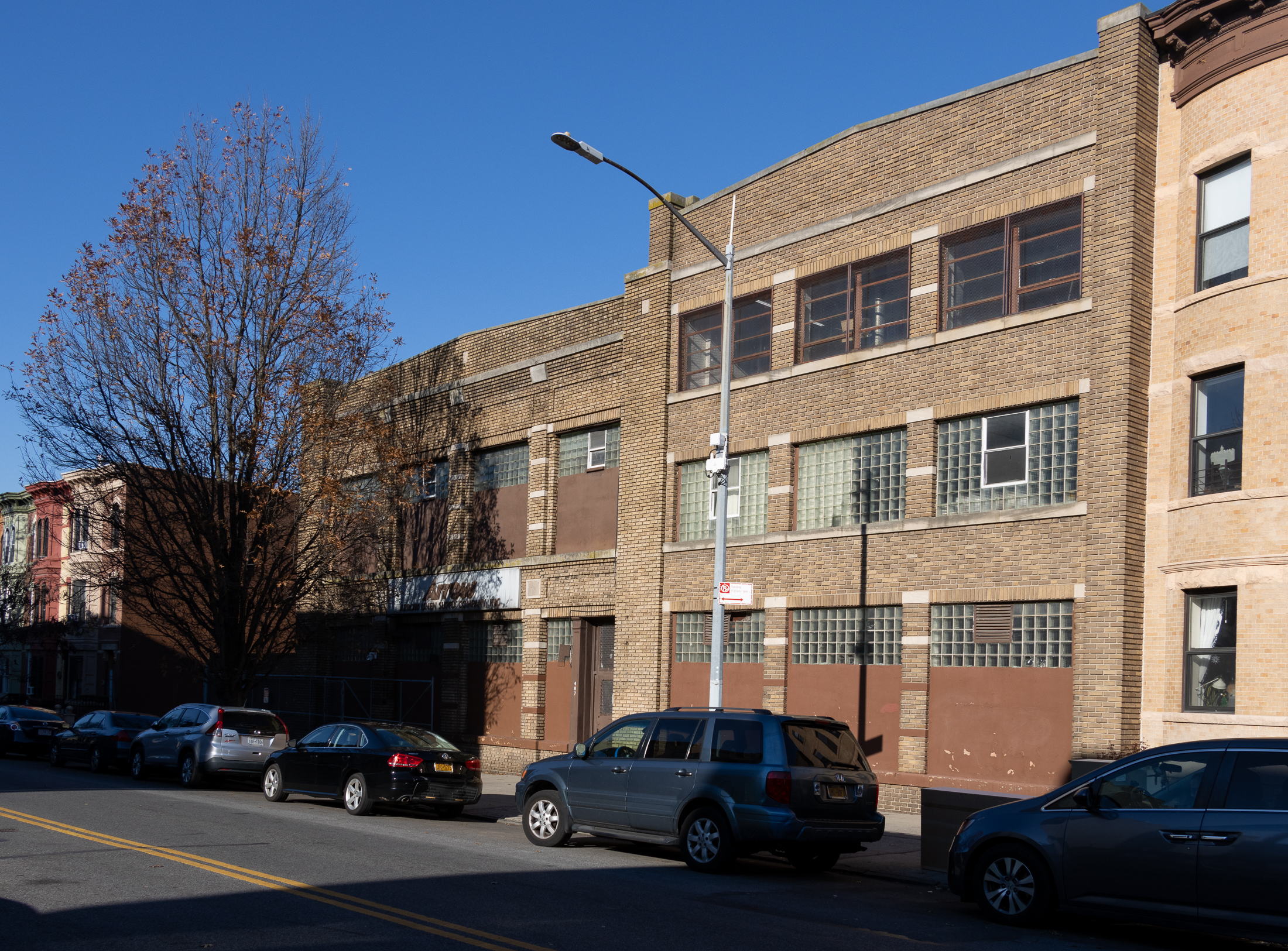
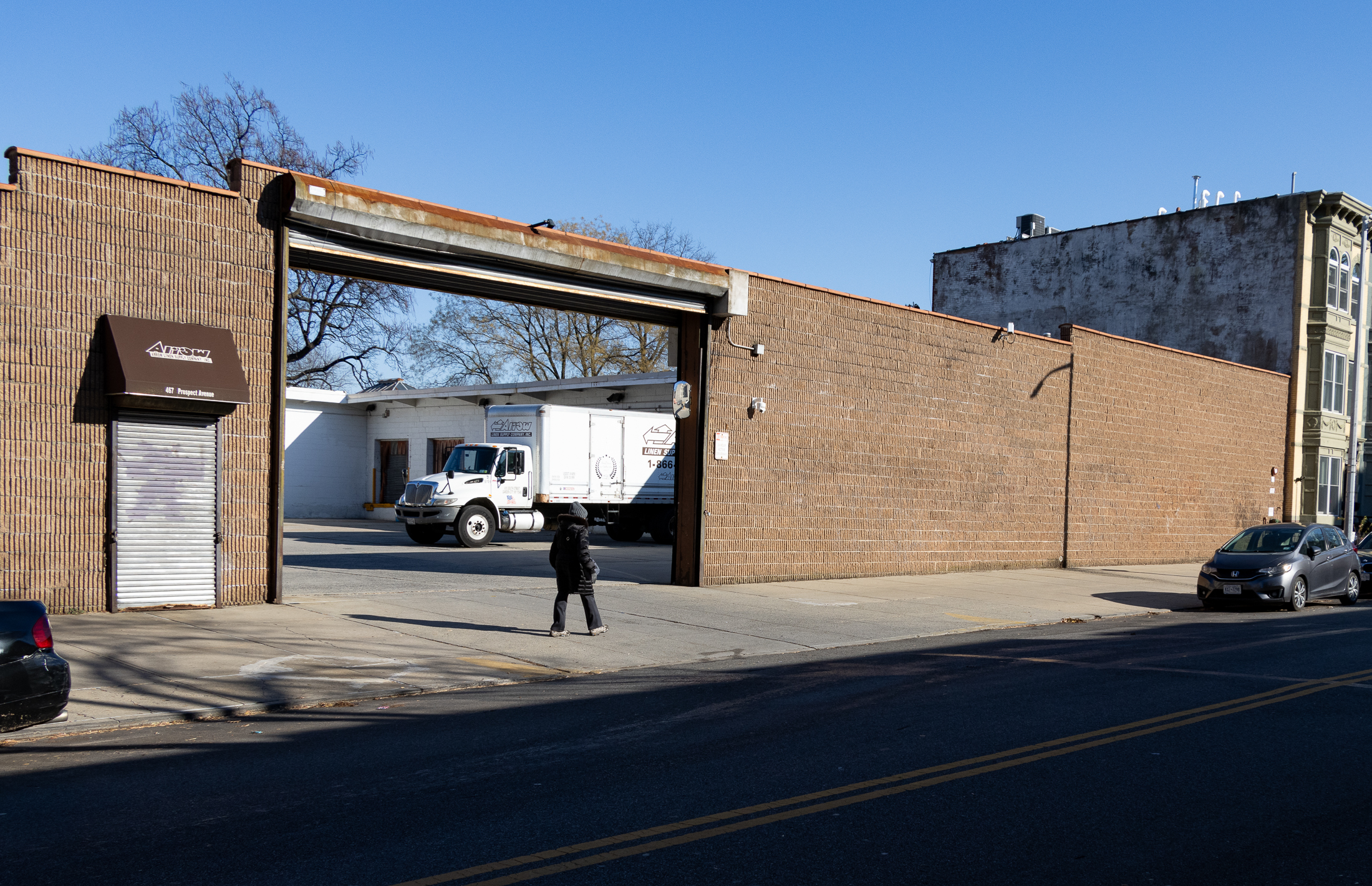
“At that zoning, the landowner gets something, the community gets something, and the council member would get an amazing win,” he said. The affordable development, he said, “would really kind of thread the needle” by providing much needed permanently affordable housing and the supportive units “that help people rebuild their lives.”
Goldberg said Housing Not Highrises is happy to support a fully affordable, shorter development, saying all along the group has supported building housing on the site so long as it is more in context with the neighborhood and would address the city’s housing affordability crisis.
Brownstoner reached out to the nonprofit affordable housing developer for comment via Council Member Hanif’s office, but has not yet heard back.
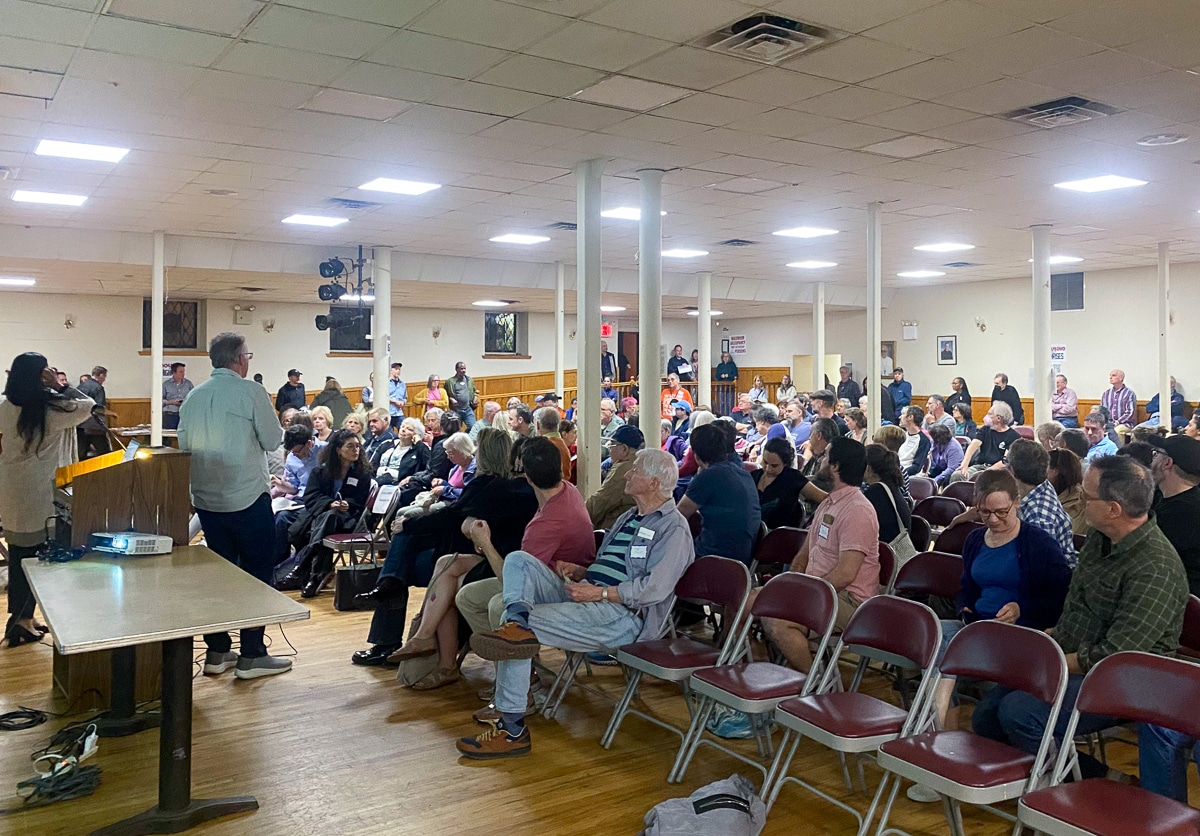
Council member backs affordability
In a statement emailed to Brownstoner, Council Member Shahana Hanif said her primary concerns for the site are “ensuring affordability, investing in the Windsor Terrace community—particularly in terms of environmental sustainability and open space access—and addressing the city’s housing crisis while being responsive to diverse community feedback.”
She said she is listening to neighbors, Community Board 7, and the Brooklyn borough president to inform her position, and has heard from residents both for and against Arrow Linen’s proposal. She said City of Yes concerns have been “elevated to the relevant city agencies” and that the proposal is still in the early stages of the uniform land use review process.
“My goal is to find a resolution that not only addresses the urgent need for more affordable housing but also enhances the quality of life for existing Windsor Terrace residents. I remain open to meeting with any party to discuss the best use of this site for new housing,” she said.
She said the city’s ULURP land-use review process allows for feedback once the developer has formally presented the project, and she encourages people to attend the upcoming community board hearing on the application. Community Board 7 will be holding the public hearing at 6:30 p.m. on Monday, September 9 at Holy Name Church at 245 Prospect Park West in Windsor Terrace.
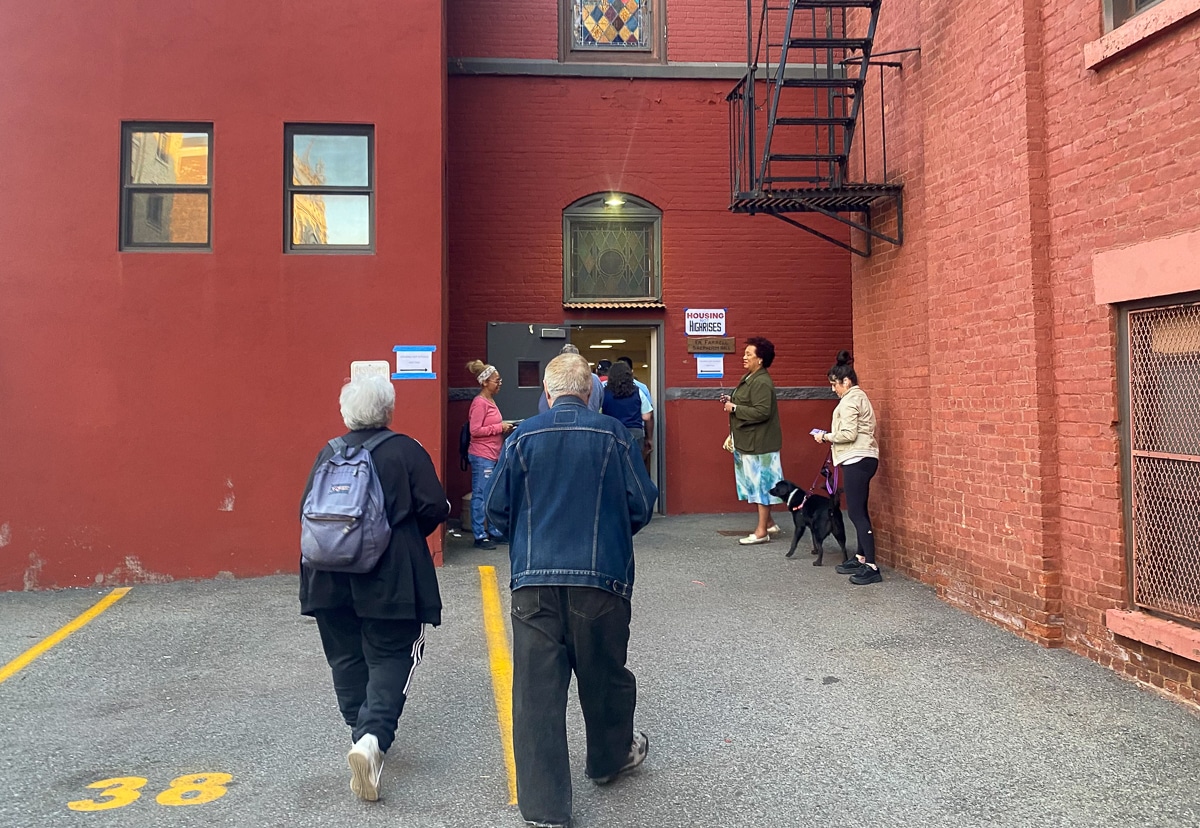
At a heated April meeting, Hanif told the crowd of over 200 that she would ensure the development will not be 15 stories, and that it will not go through ULURP before the City of Yes. But she said she wouldn’t try to reduce the height from the proposed 13 stories.
Hanif said she would be working with the community and Arrow Linen to ensure the apartments achieve maximum affordability through a Community Benefits Agreement. Those at the meeting questioned whether a Community Benefits Agreement made with Arrow Linen would be transferable when the property is sold, which Hanif said she would look into.
Senator Zellnor Myrie came out in support of the rezoning in a January op-ed in City Limits, saying while he is open to changes in the size of the buildings, he wants to see more housing built in all neighborhoods. State Assembly Member Robert Carroll at the April meeting said he believes spot rezonings should “at a bare minimum” be contextual, that he supports a seven- to eight-story building on the site, and developers should be ready to balance community needs.
The city-wide advocacy group Open New York, which describes itself as pro-housing and grassroots, has opted to support the Arrow Linen proposal as one of its select projects. The pricey area surrounding Arrow Linen is “one of the lowest producers of affordable housing in the city,” said Open New York Executive Director Annemarie Gray in a statement emailed to Brownstoner. “With access to world-class transit, schools, and parks [it] is the perfect place to build more homes.”
In December, a petition in opposition to the rezoning, aimed at local Council Member Shahana Hanif, had more than 1,100 signatures, Goldberg said at the time.
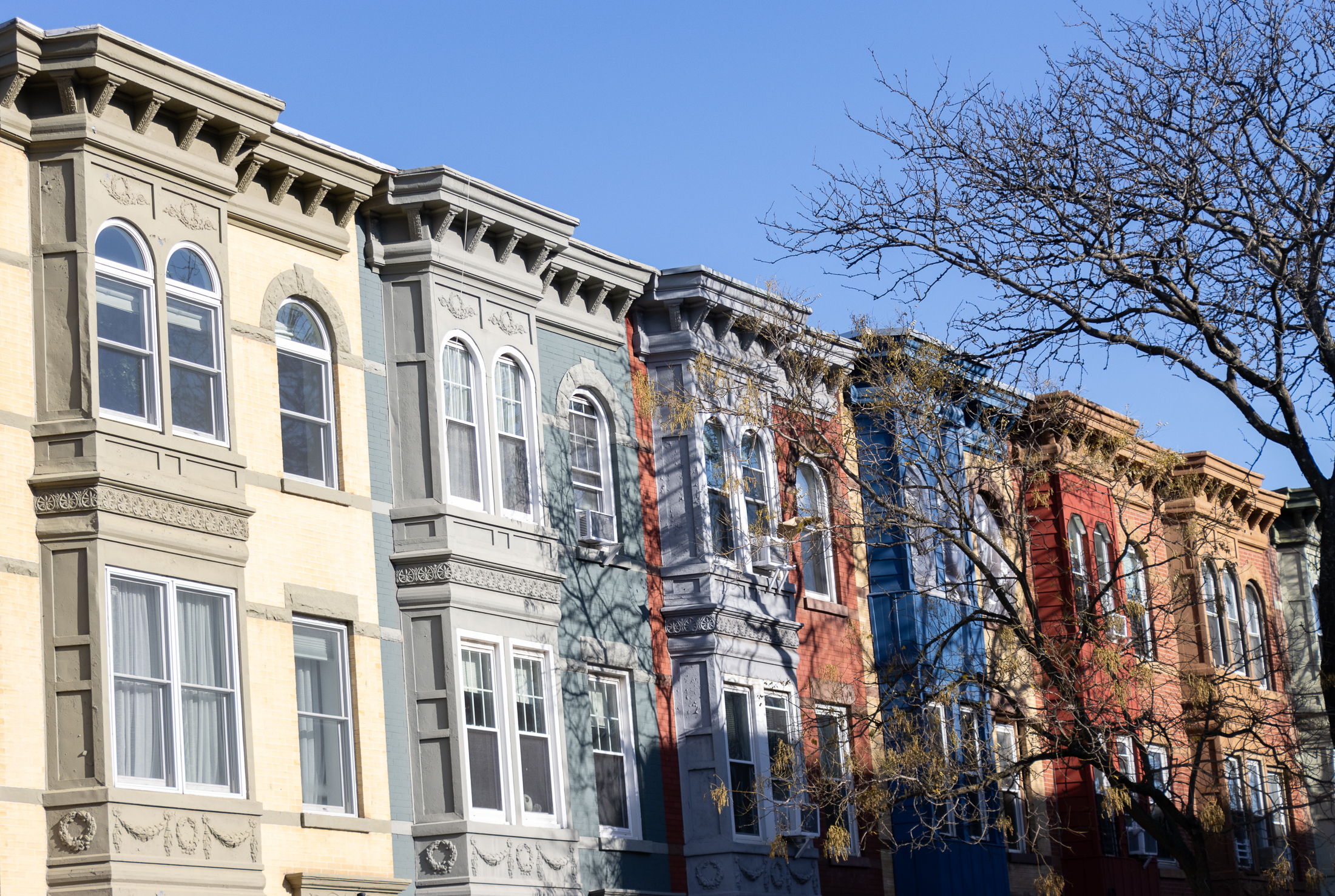
Arrow Linen has hired lobbying firm CMW Strategies and referred Brownstoner’s questions to CMW President and CEO Michael Woloz.
Woloz said that the company now thinks the best use of the Prospect Avenue property, after years as a commercial site, is housing, and that it will be listening to feedback from the community and working with elected officials through the ULURP process. He said that while Arrow Linen has “been in active discussions with respected affordable housing organizations,” it hadn’t been “approached by any serious entity looking to purchase the property.”
“Arrow Linen will be laser focused on working with the elected officials that are courageous enough to stand up for housing, reject the status quo, and deliver meaningful results for the greater community,” Woloz said via email.
According to the statement, Arrow Linen’s goal is to provide the neighborhood with “badly needed housing within a responsible, sustainable, and transit-forward design” responsive to the city’s housing crisis, and the rep said the company has “been thrilled to see an outpouring of support from many community residents who are tired of the status quo which has resulted in a severely under-housed community that has driven up the cost of housing for new generations.”
If the rezoning is approved at the level Arrow Linen is seeking — meaning a larger residential development is able to be built — the value of the site will be higher than if it is approved for a smaller one. Right now, only a three-story structure can be built on the property as of right. If the site is approved for seven to nine stories instead of 13 to 19, potentially it will mean less of a windfall for Arrow Linen.
Housing Not Highrises has criticized the 13- to 19-story Arrow Linen proposal as being “completely out of scale” with the existing mostly three- to four-story neighborhood and said the project will “radically distort” the area.
The rezoning, Goldberg said, brings risk of putting additional pressure on the local market, making small family homes targets for speculators and developers. This also includes the three-story townhouses included in the rezoning area.
Goldberg said any rezoning will mean a huge increase in land value, and in turn the city should factor in what is in the community’s best interest for the site. It feels, he added, “arbitrary that a land use decision of such impact for the future of our community can be made primarily by a landowner and a council member” and that the process is just masquerading as being democratic.
“There are over 20,000 people in Windsor Terrace and over 20,000 people in South Slope, including families who have lived here since these houses were originally built 120 years ago. How is it possible that the community, who has so much more at stake in our own future, has no say in that future?”
Related Stories
- ‘Housing Not High Rises:’ Group Opposing 13-Story Arrow Linen Project Says Local Context Missing
- Windsor Terrace Locals Want a Shorter, More Affordable Arrow Linen Project
- Windsor Terrace Affordable Housing Lottery Opens With $874 One-Bedrooms
Email tips@brownstoner.com with further comments, questions or tips. Follow Brownstoner on Twitter and Instagram, and like us on Facebook.

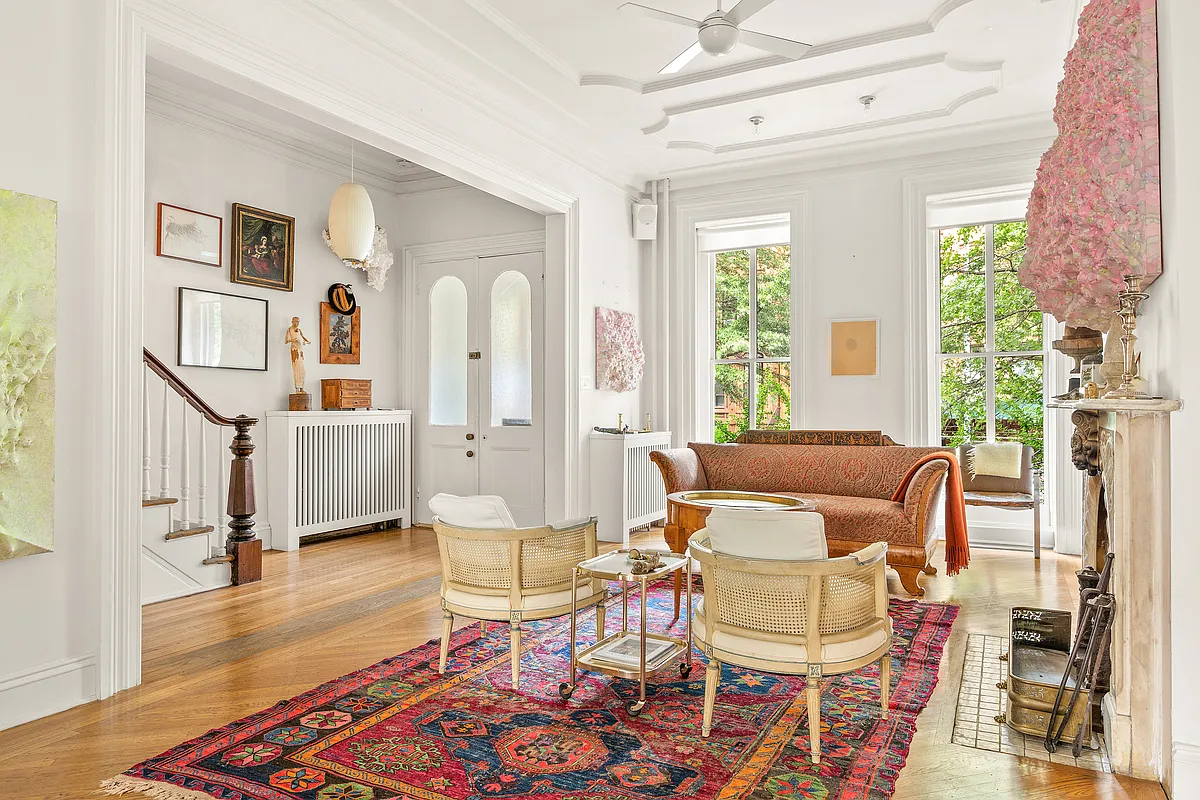
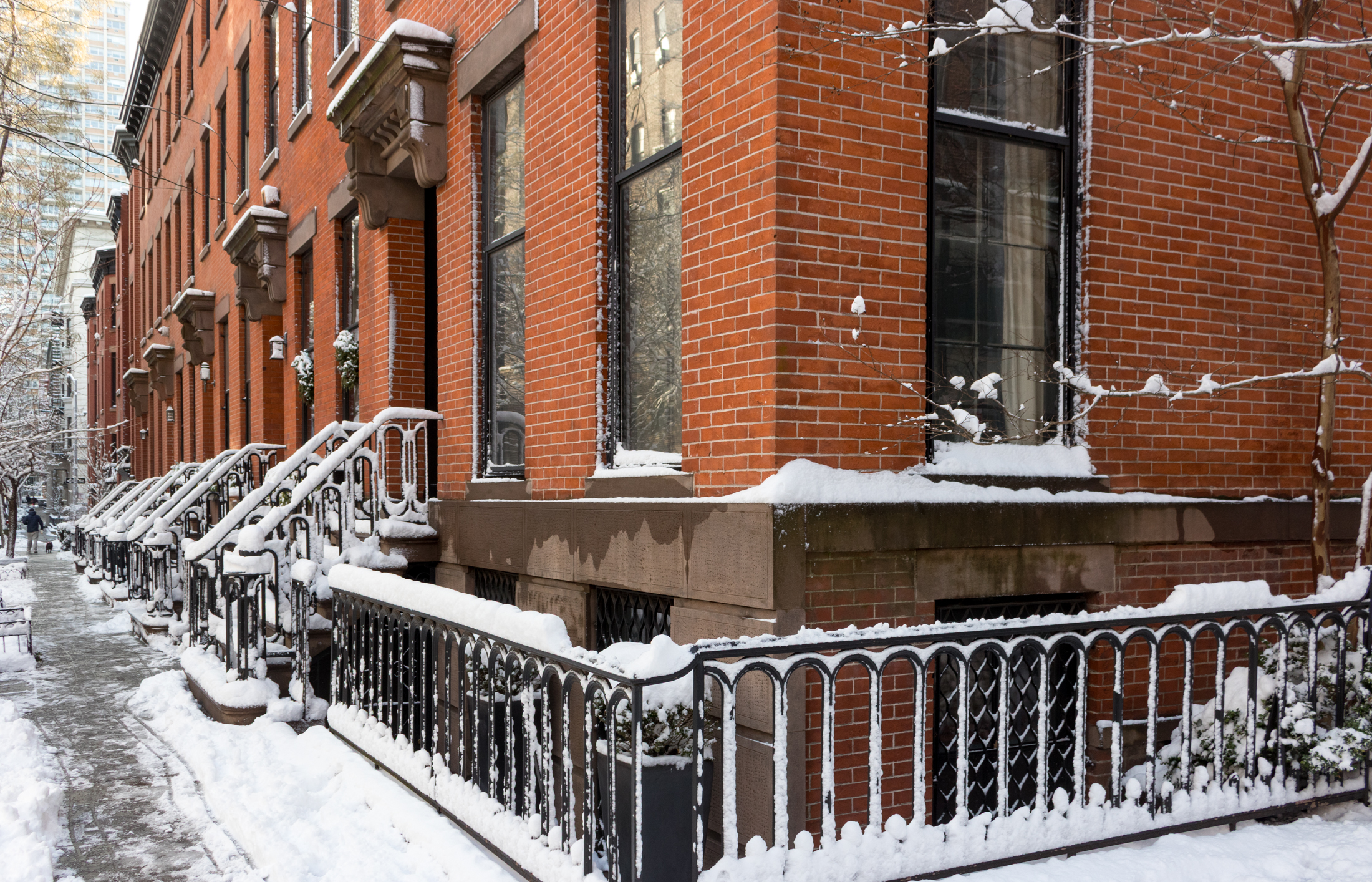
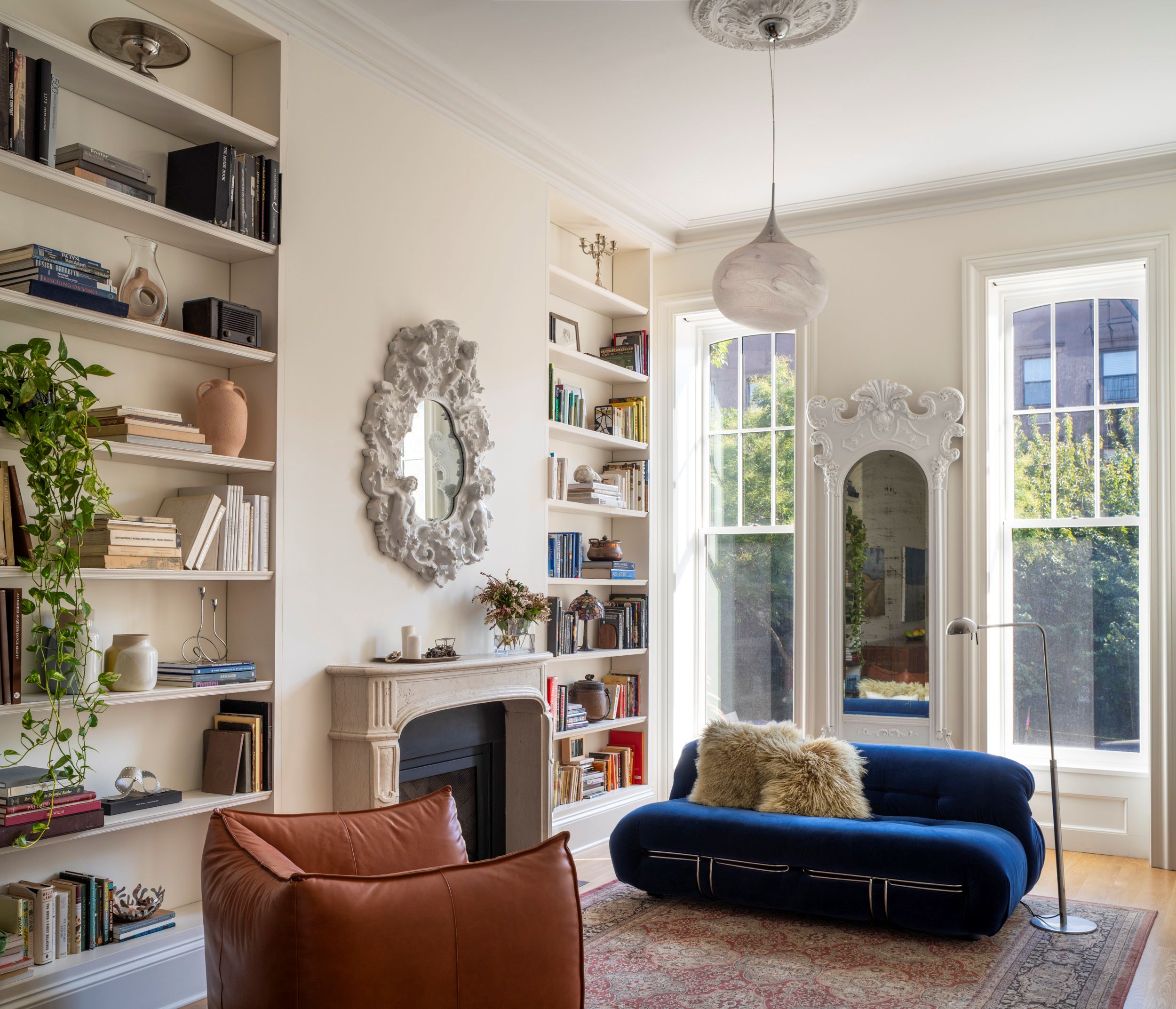
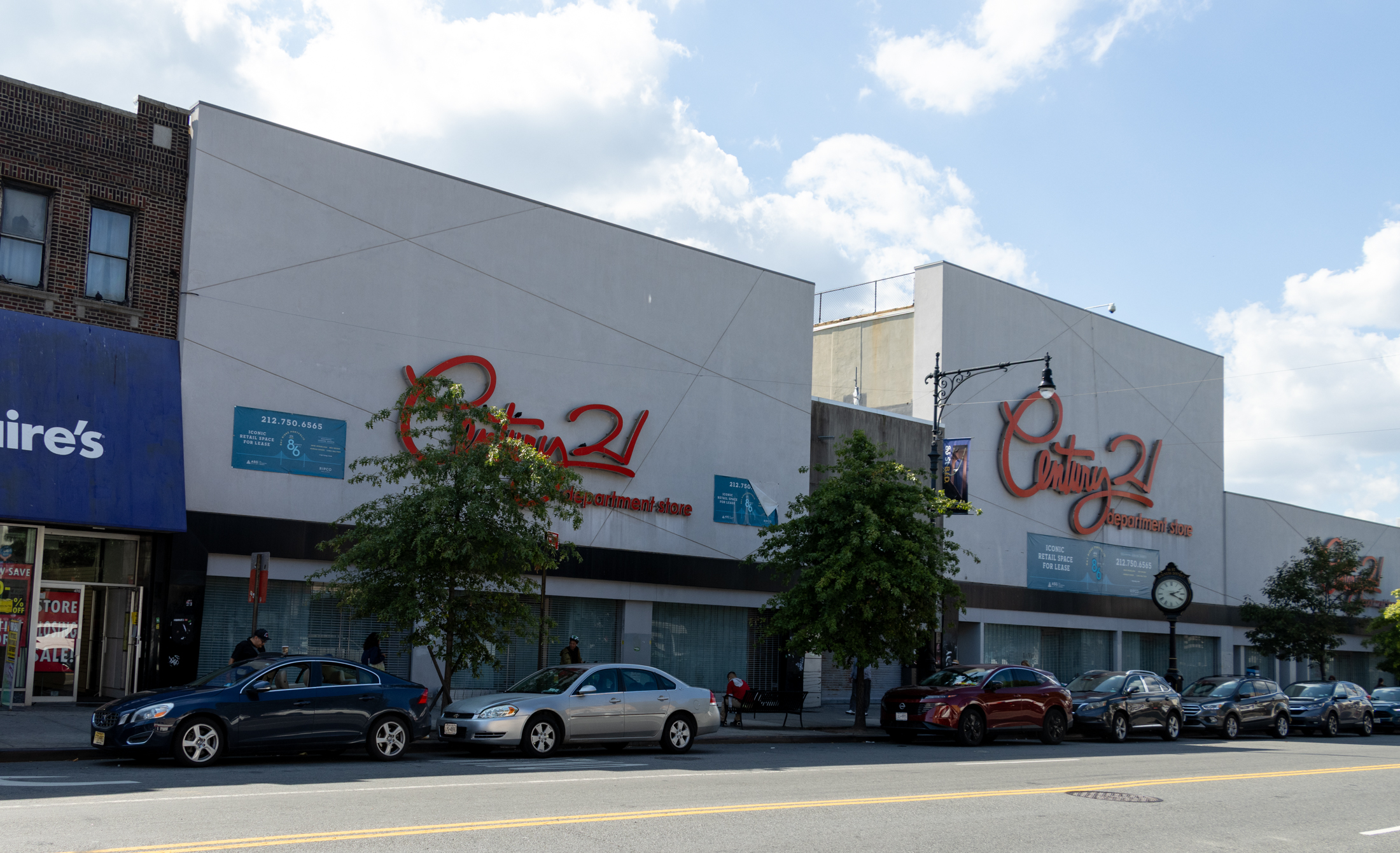
What's Your Take? Leave a Comment